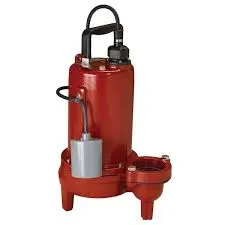Telugu
- Afrikaans
- Albanian
- Amharic
- Arabic
- Armenian
- Azerbaijani
- Basque
- Belarusian
- Bengali
- Bosnian
- Bulgarian
- Catalan
- Cebuano
- Corsican
- Croatian
- Czech
- Danish
- Dutch
- English
- Esperanto
- Estonian
- Finnish
- French
- Frisian
- Galician
- Georgian
- German
- Greek
- Gujarati
- Haitian Creole
- hausa
- hawaiian
- Hebrew
- Hindi
- Miao
- Hungarian
- Icelandic
- igbo
- Indonesian
- irish
- Italian
- Japanese
- Javanese
- Kannada
- kazakh
- Khmer
- Rwandese
- Korean
- Kurdish
- Kyrgyz
- Lao
- Latin
- Latvian
- Lithuanian
- Luxembourgish
- Macedonian
- Malgashi
- Malay
- Malayalam
- Maltese
- Maori
- Marathi
- Mongolian
- Myanmar
- Nepali
- Norwegian
- Norwegian
- Occitan
- Pashto
- Persian
- Polish
- Portuguese
- Punjabi
- Romanian
- Russian
- Samoan
- Scottish Gaelic
- Serbian
- Sesotho
- Shona
- Sindhi
- Sinhala
- Slovak
- Slovenian
- Somali
- Spanish
- Sundanese
- Swahili
- Swedish
- Tagalog
- Tajik
- Tamil
- Tatar
- Telugu
- Thai
- Turkish
- Turkmen
- Ukrainian
- Urdu
- Uighur
- Uzbek
- Vietnamese
- Welsh
- Bantu
- Yiddish
- Yoruba
- Zulu
Telephone: +86 13120555503
Email: frank@cypump.com
నవం . 22, 2024 19:11 Back to list
horizontal centrifugal oil pump/chemical pumps
Overview of Horizontal Centrifugal Oil Pumps and Chemical Pumps
In the industrial sector, the need for reliable fluid handling systems is paramount. Among the various types of pumps available, horizontal centrifugal oil pumps and chemical pumps have garnered significant attention due to their efficiency, reliability, and versatility. This article delves into the working principles, applications, and advantages of these two types of pumps.
Working Principle
At the core of both horizontal centrifugal oil pumps and chemical pumps is the centrifugal pump mechanism, which utilizes rotational energy to move fluid. When fluid enters the pump, it is directed into the impeller, where it is subjected to high rotational speeds. This action converts mechanical energy into kinetic energy, driving the fluid outward through the pump's discharge. The centrifugal force generated by the impeller allows the fluid to gain velocity, enabling efficient transfer through piping systems.
Horizontal design refers to the orientation of the pump's axis, which is typically parallel to the ground. This design benefits from gravity, helping to assist in the smooth flow of viscous fluids, such as oil and various chemicals. By locating the motor at the same horizontal level as the pump, this configuration also simplifies maintenance and reduces the risk of pump cavitation, which can occur with vertical pumps if not properly managed.
Applications
Horizontal centrifugal oil pumps are primarily used in the oil and gas industry for transferring crude oil, refined products, and other viscous fluids. They are crucial in operations such as production, transportation, and refining, handling varying pressures and temperatures efficiently. These pumps are also employed in industries such as manufacturing and energy, where the consistent flow of oil is necessary for machinery and process operations.
horizontal centrifugal oil pump/chemical pumps

Chemical pumps, on the other hand, serve a broader range of industries, including pharmaceuticals, food processing, and water treatment. They are designed to handle various fluids, including corrosive materials and abrasives, often constructed from specialized materials that prevent damage and ensure longevity. Chemical pumps play a vital role in mixing, dosing, and transferring essential ingredients in these processes.
Advantages
One of the standout advantages of horizontal centrifugal oil pumps is their high efficiency, which is essential for minimizing operational costs in a sector where margins can be slim. These pumps can operate over a broad range of flow rates and pressures, providing flexibility in various applications.
The design of horizontal pumps also contributes to their ease of maintenance. With the motor and pump aligned, replacing parts or performing routine inspections can be done more easily than with vertical designs. This reduces downtime, which is crucial for industries that rely on continuous operation.
Similarly, chemical pumps offer several advantages, such as the ability to handle a wide array of fluids without risking contamination or degradation of materials. Their design often includes features like double seals or secondary containment to prevent leaks, making them ideal for handling hazardous or sensitive materials.
Conclusion
In summary, horizontal centrifugal oil pumps and chemical pumps are essential components of many industrial processes, employing efficient mechanisms to manage the flow of various fluids. Their applications range from oil and gas to chemical processing, where reliability and durability are paramount. As industries continue to evolve, advancements in materials and technology will ensure that these pumps remain integral to fluid management solutions, contributing to efficiency and safety across diverse sectors. Understanding these pumps’ unique strengths not only aids in selecting the right type for specific applications but also facilitates effective maintenance strategies, ensuring optimal performance over time.
-
High-Performance Air Pumps for Sand & Gravel | Efficient Transport
NewsAug.03,2025
-
ISG Series Vertical Pipeline Pump - Chi Yuan Pumps Co., LTD.|Energy Efficiency, Corrosion Resistance
NewsAug.03,2025
-
ISG Series Pipeline Pump - Chi Yuan Pumps | Energy Efficiency&Compact Design
NewsAug.03,2025
-
ISG Series Vertical Pipeline Pump - Chi Yuan Pumps Co., LTD.|High Efficiency, Low Noise, Durable
NewsAug.02,2025
-
ISG Series Vertical Pipeline Pump - Chi Yuan Pumps | High Efficiency, Low Noise
NewsAug.02,2025
-
ISG Series Vertical Pipeline Pump- Chi Yuan Pumps Co., LTD.|High Efficiency&Compact Design
NewsAug.02,2025










